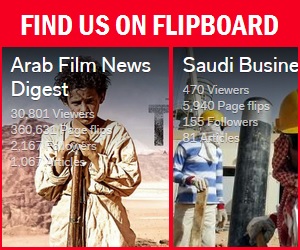Facebook Arabic triumphs after Arab Spring
Middle East & North Africa users of Facebook’s Arabic interface reach 15.6 million, accounting for 39% of all users in the region.
It doesn’t seem long ago that marketers considered Facebook a minority interest and lacking in reach outside of a few select English speaking audiences in the Middle East and North Africa*. The social media platforms of choice for the region’s largest consumer markets were Arabic language forums and even when Facebook introduced its Arabic interface in 2009, many doubted that Facebook would resonate culturally with the region’s mass market. Those doubts quickly dissipated following the Arab Spring.
As Facebook’s popularity soared in Egypt last spring, so subscribers grew 200% within the space of 2-3 months and an increasing number of users in Egypt chose Facebook’s Arabic interface (reaching 51% by May 2011).

Egypt has more users of Facebook Arabic than any other MENA* country market.
Facebook subscribers in the Middle East and North Africa passed the total number of newspaper subscribers in the region in 2010, reaching 15 million users in May 2011. Today, Facebook has more than two and a half times that number, but the demographics have changed dramatically.
The growth of Facebook’s Arabic interface in the Middle East & North Africa has outstripped Facebook’s overall growth in the region by nearly double, reaching 160% year-on-year growth by May 2011 and 70% in the past year, compared with overall subscriber growth of 87% and 22% respectively. There are now more Facebook Arabic users in MENA today than there were total Facebook users in the region two years ago.
Arabic dominates Egypt and Saudi Facebook communities
Reaching 15.6 million this month, users of Facebook’s Arabic interface in MENA now account for 39% of all users, rising to 60% of users in Egypt and 55% of users in the Kingdom of Saudi Arabia. Meanwhile, less connected markets of Iraq, Libya, Palestine and Yemen have seen some of the fastest adoption rates of Facebook Arabic. 60% of Iraq’s 1.6 million Facebook subscribers now use the Arabic interface, 74% in Libya, 75% in Palestine and 82% in Yemen.

Facebook Arabic now has 15.6 million users in MENA* and accounts for 39% of all subscribers in the region.
Whilst Bahrain, Kuwait, Lebanon, Qatar, Oman and the United Arab Emirates all remain majority Facebook English markets, and Algeria, Tunisa and Morocco remain majority French language, almost all markets have seen accelerated growth for Facebook Arabic. Even the UAE has seen 47% growth in Facebook Arabic users.
It, perhaps, goes without saying that, in today’s social media obsessed world, the changing demographics of Facebook in the Middle East and North Africa have profound implications for communications and marketing. Not only does this present new opportunities for targeting consumers across the region, the increasingly high usage of Facebook in Arabic challenges old assumptions of how Arabic speaking Internet users spend their time online.
To be continued…
* For the purposes of this study, Middle East and North Africa (MENA) includes Algeria, Bahrain, Egypt, Iraq, Jordan, Kuwait, Lebanon, Libya, Morocco, Oman, Palestine, Qatar, Saudi Arabia, Tunisia, UAE and Yemen.
** All figures calculated independently by Spot On PR from Facebook’s data for advertisers.
Want to read more?
If you liked reading this post , you might be interested in our past blog posts on Facebook demographics and usage in the Middle East and North Africa:
Facebook Arabic Rising (June 2011)
Egypt Facebook demographics (January 2011)
Ten Middle East digital predictions for 2011 (January 2011)
Facebook adds 1 million more Arabic users (August 2010)
Facebook bigger than newspapers? So what? (May 2010)
15 Million MENA Facebook Users – Report (May 2010)
Facebook with us!
Tags: Arab Spring, Egypt, Facebook Arabic, MENA, Middle east, North Africa, Saudi Arabia, social media, UAE


